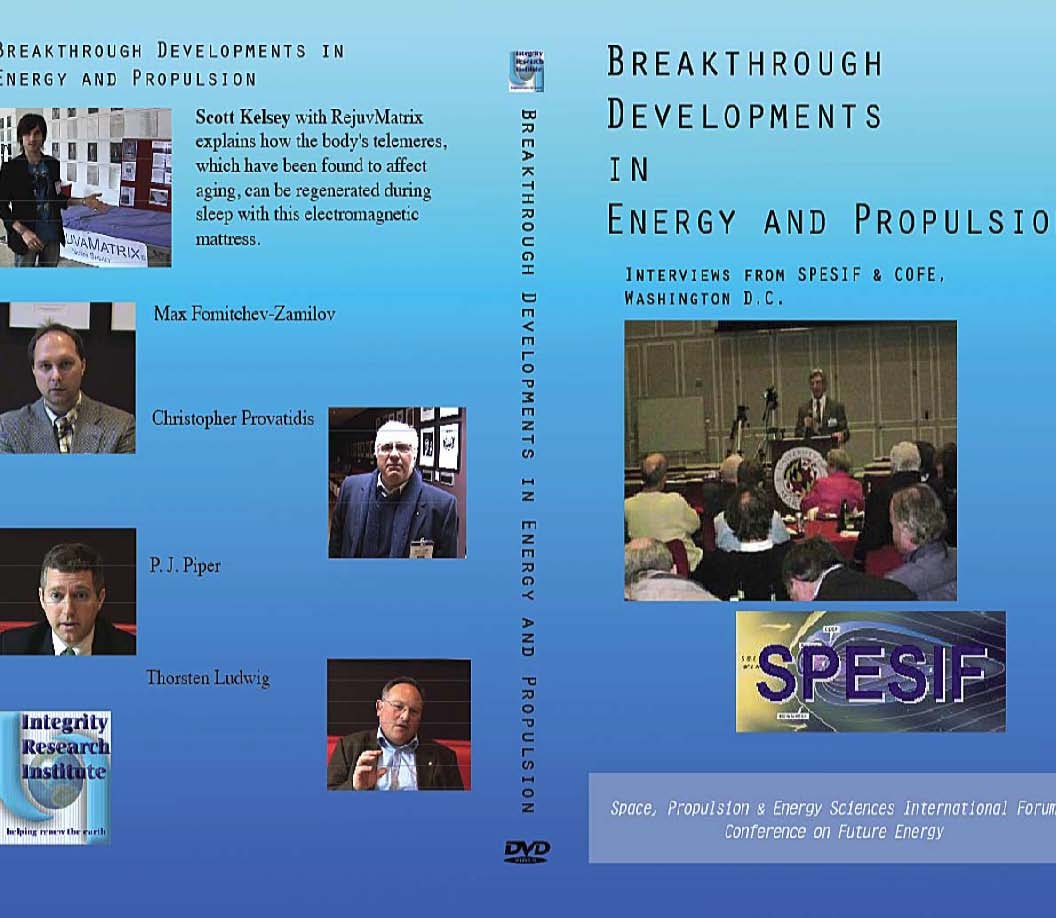|
|
|
Dear
Subscriber,
With Story #3, we are proud to
announce the newly released,edited anthology: Physics of the Zero
Point Field and its Applications to Advanced Technology released
by Nova Publishers after months of work. I was a contributor to the
first and last chapters (Chapters 1 and 7) but also edited Professor
Claus Turtur's Chapter 6 to make sure the biographical material on
future energy inventors was as accurate as possible. It may become a
popular reference text on zero point quantum
vacuum energy as a result of our combined efforts.
Speaking
of the quantum vacuum, it is not often that a student invents a
Casimir engine but it may become a more frequent occurrence as time
goes on, since Vacuum Engineering it destined to evolve into a
specialized profession as well as a billion dollar business.
Story
#2 presents the details about Aisha Mustafa, a 19-year-old Egyptian
physics student, who also patented her dynamic Casimir engine (see
our past Future Energy eNews, June,2011 for a good explanatory
article on how a ""Moving Mirror Generates Light from the
Vacuum" from the dynamic Casimir effect.)
With
Story #1, we are pleased to promote the release of the world's
electrogravitics pioneer, T. Townsend Brown's secret experimental
results from the time he spent in France. See
for background information on electrogravitics if you are not
familiar with the fifty years of development of this propulsion
effect from high voltage on asymmetric capacitors. We have published
two edited volumes on electrogravitics and electrokinetics. IRI
Members are now also receiving the Future Energy Annual that contains
even more exclusive news on the subject.
Everyone should pay attention to
Story #4 since it is possibly the most amazing and practical future
energy generator that we have ever come across. IRI originally ran
the reprint of New Scientist's
article on the Innowattech piezoelectric highway electricity
generator in 2009. Since then, the company has made several
demonstration models from railroads to highway sproving that it can
generate around 400 kW per kilometer of roadway.
More popular than ever is any
story (e.g. #5) that shows empowered women making a difference in
society. In rural Africa, a video shows how they are becoming solar
engineers. It is reminiscent of our FEeNews story in December 2011 of
how India is Lighting up Lives with
Solar lights
Thomas Valone,
PhD,PE
Editor
www.IntegrityResearchInstitute.org
|
|
|
|
|
1) T T Brown Story Revealed
|
Starburst Foundation. Dr. Paul
LaViolette at http://starburstfound.org/electrograviticsblog/?p=49
In
1955 and 1956Townsend Brown made two trips to Paris where he
conducted tests of his electrokinetic apparatus and electrogravitic
vacuum chamber tests in collaboration with the French aeronautical
company Société National de Construction Aeronautiques du SudOuest
(S.N.C.A.S.O.) . He was invited there by Jacques Cornillon,the
company's U.S.technical representative. The project was named Project
Montgolfier in honor of the two French brother inventors who
performed early aircraft flights. The project continued for several
years until the company changed ownership resulting in a final report
which was written up in 1959.
|
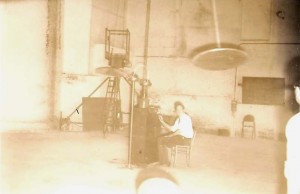
|
|
TT
Brown flying his discs at the SNCASO facility outside Paris.
Photo courtesy J Cornillon
|
Details of the Project Montgolfier experiments remained a closely
guarded secret for many years until Jacques Cornillon courageously
decided to make them public prior to his death in July
2008. Brown's proposal, the project's top secret finalreport,
and an assortment of revealing diagrams and photos are posted onthe
Cornillon website at: Project Montgolfier: http://projetmontgolfier.info/
and are availablefor free download. Brown's proposal is in English,
whereas the secret Montgolfier Project final report is in
French. An English translation of this 100 page final report is
available from the Peeteelab website for a fee of $5.95
Canadian. (Note there is a translation error in the statement
of the electrokinetic discwire size, which is 100 times smaller
than quoted. Refer to the original French document for the
proper size.)
The flying disccarousel experiment that the Montgolfier Project
conducted in 1955 used 2-1/2foot diameter discs (75 cm dia.) hung
from 4 meter tethers suspended from theends of a 3 meter arm.
Based on the description given, this seems to have been almost the
same flying disc test that Brown gave to the Navy at Pearl Harbor
ayear or two earlier.
|
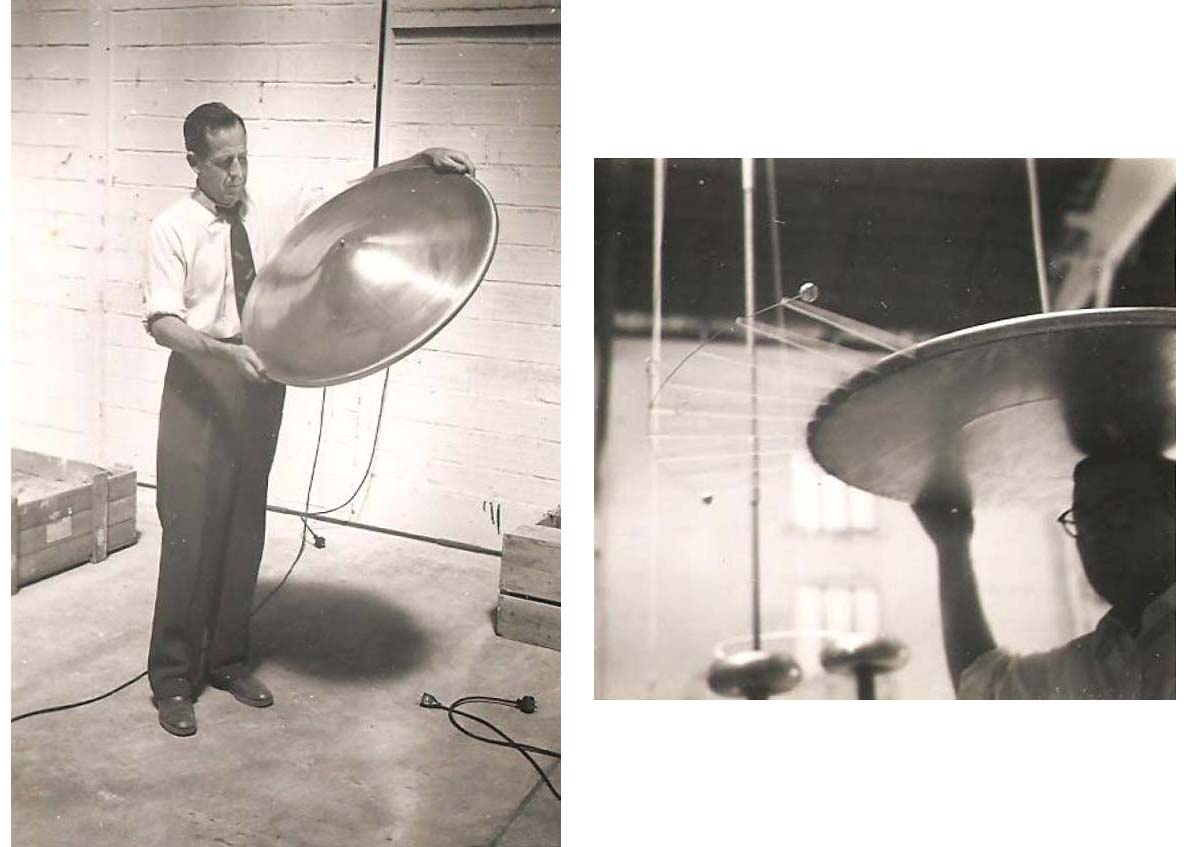
|
|
Left:
TT Brown holding disc. Right: closeup showing
outtward-leading wire. Photo courtesy J. Cornillon
|
Brown had finished his
collaboration with S.N.C.A.S.O. in 1956. From a letter that
Mr.Cornillon later wrote to a colleague, we learn that in October
1957 Brownwas in the process of test flying 10 foot diameter discs
energized at a voltageof 300 kV! Here we see that Brown had
followed the plan he had first setout in his 1952 Project Winterhaven
proposal which was to eventually testfly a ten foot diameter disc
powered by 500 kV (70% more voltage than he usedin his 1957 test
flight). Hence we see that by this early date Brown had
progressed beyond the toy model stage to flying small scale
aircraft. To reach this stage he must have been receiving
substantial funding from either the military or from a major
corporation. More about Project Winterhaven and Brown's research
may be found in the book Secrets of Antigravity
Propulsion In addition theProject Montgolfier team constructed a
very large vacuum chamber for performingvacuum tests of smaller discs
at a pressure of 5 X 10-5 mm Hg; see below.
|
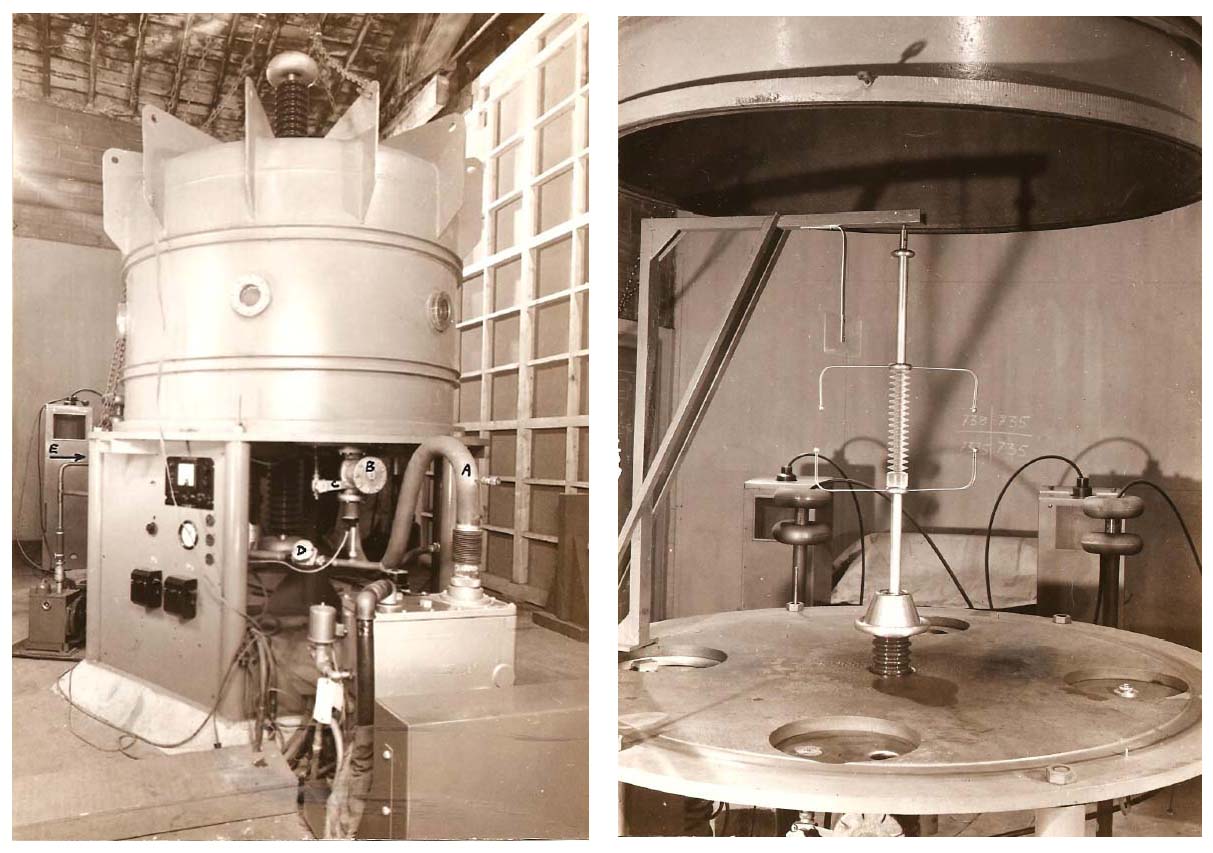
|
Left:
Vacuum vessel chamber. Right: vessel opened to show test rotor rig.
Photos courtesy J Cornillon
|
In reading the section
describing the vacuum chamber results, we learn that when the discs
areoperated at atmospheric pressure they move in the direction of the
leading edgewire regardless of outboard wire polarity. This
indicates that in normal atmospheric conditions the discs are
propelled forward primarily by unbalanced electrostatic forces due to
the prevailing nonlinear field configuration (which causes thrust in
the direction of the low field intensity ion cloud regardlessof the
ion polarity). On the other hand, the report says that under
highvacuum conditions the discs always moved in the direction of the
positive pole,regardless of the polarity on the outboard wire.
This indicates that inthe absence of the unbalanced forces exerted by
ion clouds, the discs movedmainly on the basis of the electrogravitic
field effect, always toward the positive (negative G) direction.
|
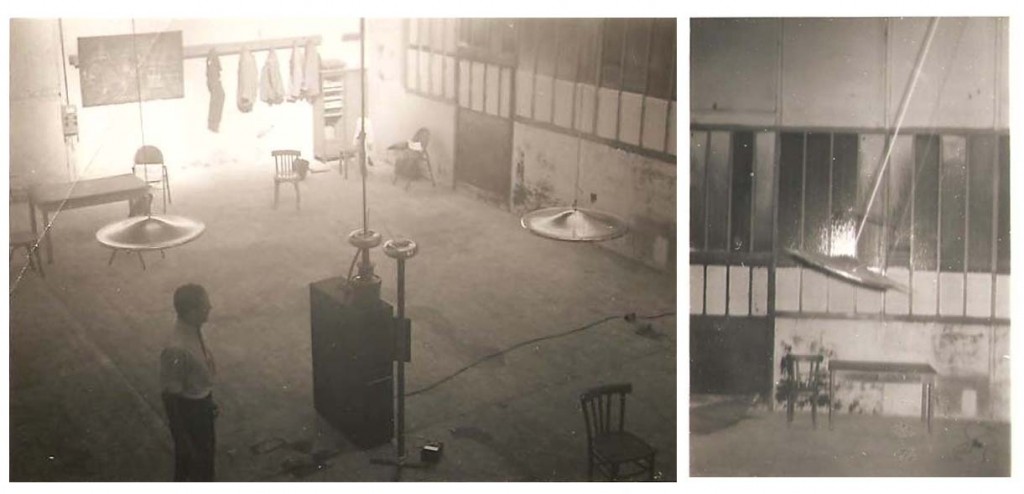
|
|
Disc
rig. Disc in flight. Photo courtesy J Cornillo
|
These
vacuum chamber experiments were a decisive milestone in that they
demonstrated beyond a doubt that electrogravitic propulsion was a
real physical phenomenon. The report concludes saying: "It
seems perfectly reasonable to conclude that a concentrated force of
some kind accumulates within the presence of a strong
dielectric."(i.e., presumably in the presence of a high-K
dielectric.) Based on the angle of the disc
suspension cable seen in the photo on the right below, one may
estimate that the disc was traveling at a speed of ~8.7 meters per
second, or about 20 mph. It would have completed one revolution of
its 18 metercourse in 2 seconds.
Ed. Note:
ElectrograviticsSystems, and Electrogravitics II, both edited
by ThomasValone which tell the complete history and developments of
TT Brown's amazingdiscovery are available in book form and eBook
form. http://www.integrityresearchinstitute.org/electrogravitics.html
back to table of contents
|
2)
Casimir Propulsion Engine invented by Egyptian student
|
|
BY
Kit Eaton | Fast Company 05-21-2012 |
http://www.fastcompany.com/1837966/mustafas-space-drive-an-egyptian-students-quantum-physics-invention

Remember the
name, because you might see it again: Aisha Mustafa, a 19-year-old
Egyptian physics student, patented a new type of propulsion system
for spacecraft that uses cutting edge quantum physics instead of
thrusters.
First, a little background: One of the strange quantum facts at work
in Mustafa's engine idea is that there's no such thing as a vacuum,
devoid of particles, waves, and energy. Instead the universe's
supposedly empty spaces are filled with a roiling sea of particles
and anti-particles that pop into existence, then annihilate each
other in such a short space of time that you can't readily detect
them.
Mustafa invented a way of tapping this quantum effect via what's
known as the dynamic Casimir effect. This uses a "moving
mirror" cavity, where two very reflective very flat plates are
held close together, and then moved slightly to interact with the
quantum particle sea. It's horribly technical, but the end result is
that Mustafa's use of shaped silicon plates similar to those used in
solar power cells results in a net force being delivered. A force, of
course, means a push or a pull and in space this equates to a drive
or engine.

In terms of space propulsion, this is amazing. Most forms of
spacecraft rely on the rocket principle to work: Some fuel is made
energetic and then thrust out of an engine, pushing the rocket
forward. It's tricky stuff to get right, particularly on Earth, which
is why we shouldn't be surprised SpaceX's recent launch stopped at
the critical moment due to a problem with one of its chemical rocket
engines. For in-space maneuvering, many different types of rocket are
used, but even exotic ones like ion drives (shown in a NASA image
above) need fuel. The only space drive that doesn't involve hauling
fuel and complex systems into orbit is a solar sail. And Mustafa's
invention can, rudimentarily, be compared to a solar sail...because
it doesn't need "fuel" as such, and exerts just the tiniest
push compared to the thundery flames of SpaceX's rockets. It's
potential is enormous--because of its mechanical simplicity and
reliability it could make satellite propulsion lighter, cheaper, and
thus indirectly lower the cost of space missions of all sorts.
And if you want proof that the tiniest of pushes can propel a
spacecraft, check this out: Two Pioneer space probes, launched in the
1970s, are the farthest manmade objects from Earth...but they're not
as far away as they should be. Over the course of a year they deviate
by hundreds of kilometers from where all our science says they must
be in orbit, and it's been found that it's down to the tiniest of
pushes coming from radiators on-board that radiate heat waves out
slghtly more in one direction than another.
Aisha's invention is so promising that her university's staff aided
with a patent application. She intends to study the design further in
the hope of testing it out for real in space, but as the OnIslam.net
site points out she notes that there's no funding for a department of
space science and this prevents important research being carried out
in strife-ridden Egypt.
RELATED
ARTICLE
http://www.onislam.net/english/health-and-science/science/457096-egyptian-student-invents-a-new-propulsion-method.html
back to table of contents
|
3) New
Book on Zero Point Energy
|
|
Integrity
Research Institute Press Release, June 2012
A new book on
Zero Point Energy and its applications to Advanced Technology
published by Nova Publishers will be available in the last
quarter to 2012. You can order the ebook at:
https://www.novapublishers.com/catalog/product_info.php?products_id=35047
Edited by Takaaki
Musha from the Technical Research and Development Institute in Japan,
the book contains 2 chapters written by IRI's President, Dr Thomas
Valone, plus other chapters written by Mario Pinheiro, Gary
Stephenson and Claus Turtur. The book description
is below.
|
Physics of the Zero Point Field and its
Applications to Advanced Technology
|
|
|
|
Editors: Takaaki Musha (Technical
Research and Development Institute, Advanced Science-Technology
Research Organization, Yokohama, Japan)
|
|
Book
Description:
Space-time in a vacuum has generally been viewed as a transparent
and ubiquitous empty continuum within which physical events take
place. However quantum field theory and quantum electrodynamics
views the vacuum as the sum total of all zero-point fluctuations
of the vacuum electromagnetic field, arising from the continuous
creation and annihilation of virtual particle pairs. It is this
latter more contemporary view that is, for the first time, more
fully explored in text form with Physics of the Zero Point Field.
The scope of applications in this book range from the Casimir
effect, the variation in zero-point energy at the boundaries of a
region observable in nano-scale devices, to ideas for a proposed
inertial drive as first described by Puthoff. (Imprint: Nova)
|
|
Table of
Contents:
Preface
Acknowledgments
Chapter 1 Historical Background of the ZPF
(Thomas Valone)
Chapter 2 Introductory Quantum Field Theory
(Mario J. Pinheiro)
Chapter 3 Puthoff's Gravitational Theory on ZPF field
(Takaaki Musha)
Chapter 4 Field Propulsion System utilizing ZPF field
(Takaaki Musha)
Chapter 5 Sonoluminescence from the Standpoint of ZPF Field
and
Possible Applications for Energy Sources
(Takaaki Musha, Gary Stephenson)
Chapter 6 Possibility of Extracting Energy from the Quantum
Vacuum
(Claus Turtur)
Chapter 7 Future Prospects of Advanced ZPF Technologies
(Thomas Valone)
Index
|
|
RELATED BOOK ON ZERO POINT
ENERGY
Zero Point Energy: The Fuel of the Future
A bestseller, 4 years in a row.
back to table of contents
|
4) Crystal Roads
Harvest Energy of Passing Cars
|
|
Innowattech Press Release http://www.innowattech.co.il/index.aspx
Ed. Note: Sometimes we update great future energy stories we
ran years ago. The above title is from New Scientist 2008 archived on
our website. Hopefully some of our subscribers will recognize the
value of generating 400 kW per kilometer of roadway with harvested
energy from heavy passing vehicles and offer help to facilitate
licensing in this country, thus furthering energy independence. The
US needs this type of robust energy in the gigawatt range for every
few kilometers of installed piezoelectric crystal converters with no
pollution. No other renewable energy source seems to compare since
Innowattech IPEGs are not weather-dependent and is far less costly
per kW of installed power. - TV
|
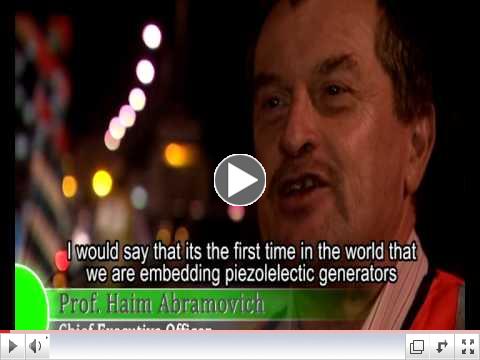
|
|
Innowattech
Alternative Energy Harvesting System
|
Innowattech Energy Harvesting Systems has developed a
new alternative energy system that harvests mechanical energy imparted
to roadways, railways and runways from passing vehicles, trains and
pedestrian traffic and converts it into green electricity. The
system, based on a new breed of piezoelectric generators, harvests
energy that ordinarily goes to waste and can be installed without
changing the habitat. Innowattech presents a pioneering invention for
Parasitic Energy harvesting. We provide genuine environmental
benefits where parasitic mechanical energy on roads, highways,
railways and airport runaways, are harvested and transferred back, in
a process by which the energy is captured, stored and reused.
The
Innowattech Green Energy Solution:
The
piezoelectric phenomenon was first described by the Curie brothers.
They observed that certain materials generate electric current when
they are deformed. Today piezoelectric materials have multiple uses
in industry, but most work efficiently only at high frequencies.
Innowattech has developed a new breed of piezoelectric generators
with a mechanical electrical association that are ideally suited to
harvest the mechanical from roadways, railways, runways and
pedestrians.
In addition has developed a very efficient storage system to collect
and store the electricity produced by these generators. The
accumulated energy can be used for local power needs or routed into
the grid.
The energy consumed by the vehicle (sourced in the fuel combustion)
utilized for a variety of applications; one of them is to overcome
rolling resistance. A typical asphalt road can be described as a
visco-elastro-plastic material, with elasticity being its dominant
material characteristic.
When a vehicle passes over a road, the road deflects
vertically. This deflection is released as thermal energy.
For a road with embedded piezoelectric generators, part of the energy
the vehicle expands on roads deformation is transformed into electric
energy (via direct piezoelectric effect) instead of being wasted as
thermal energy (heat).
Innowattech's advantages:
* Pure energy harvesting (parasitic energy only)
* Functions in all weather conditions
* Solution integrated with infrastructure - theft & damage proof
* Solution does not require purchase of real estate
* Proximity to consumer
* Data collection, e.g. "Smart Road," etc.
* Providing electricity for areas remote from main electricity
lines
On Wednesday, December 1st 2010, Innowattech has
installed a rail monitoring station with cooperation of the Israeli
National Railways company. The monitoring station is located on a
commercial rail near the Haifa station.
The station includes several systems that together enable
Innowattech's team provide high accuracy data to the rail operators'
everyday needs.
The unique full rail monitoring system was developed based on
Innowattech's technology which enables the conversion of usually
wasted mechanical energy into useful electrical energy.
Most of the world's tracks use plastic based pads assembled between
the sleeper and the tracks. These pads are designed to reduce the
impact of fluctuations during the train's travel and at the same time
reduce the environmental noise.
Removing the plastic based pads: 
Innowattech has developed a similar pad
in geometry and size to the original pad. Innowattech's pads are
embedded with PZT materials, so once the train passes; an electric
pulse is created which allows creation of electrical energy. Based on
Innowattech's existing knowledge it is possible to analyze and
process the received signals.
Inserting Innowattec's pads:
 Currently, Innowattech's
system enables data on dynamic & static weight of the train and
its components (wheels, axles, locomotive and wagons), speed, count
of the various railway wheels and components. Currently, Innowattech's
system enables data on dynamic & static weight of the train and
its components (wheels, axles, locomotive and wagons), speed, count
of the various railway wheels and components.
Innowattech's development team is now concentrated on expanding the
information provided and is intending to present information related
to measurements and components' health such as the wheel's diameter
& profile, in the upcoming quarter. The processed information,
displayed in tables, is transferred as a file to the relevant office
in the Railway Company.
This basic information, necessary to train operators wherever they
are, allows companies to reduce maintenance effectively.

The
simplicity of the monitoring station's construction and its
attractive price is a breakthrough in this market and allows many
railway companies to place monitoring stations along the tracks,
reducing the need for transferring measuring instruments along the
tracks, as is the case today in many parts of the world.
Innowattech is already in negotiations with several costumers from
the railway field regarding the rail monitoring system and intends to
start commercial selling very soon.
back to table of
contents
|
5)
Solar News: Rural Women becoming Solar Engineers
|
|
|

|
|
The
Rural Women Solar Engineers of Africa-Latest
|
In
Rajasthan, India, an extraordinary school teaches rural women and men
-- many of them illiterate -- to become solar engineers, artisans,
dentists and doctors in their own villages. It's called the Barefoot
College, and its founder, Bunker Roy, explains how it works.
Sanjit
"Bunker" Roy is the founder of Barefoot College, which
helps rural communities becomes self-sufficient. Full bio »
RELATED
VIDEO
http://www.ted.com/talks/bunker_roy.html?utm_source=newsletter_weekly_2011-10-19&utm_campaign=newsletter_weekly&utm_medium=email'
back to table of contents
|
About Integrity Research Institute
Future Energy eNews is
provided as a public service from Integrity Research Institute,
a Non-Profit dedicated to educating the public on eco-friendly
emerging energy technologies.
FREE copy
of the 30 minute DVD "Progress in Future Energy" is
available by sending an email with
"Free DVD" in subject and mailing address in
body.
Your generous support is
welcome by making a tax deductible donation on
our secure website
|
|
|
|
- Scott Kelsey, Missouri State, explaining Rejuvamatrix, Pulsed EMF
therapy to increase the length of DNA telomeres, which directly
affect our lifespan.
- Max Formitchev-Zamilov, Penn State, discussing Cavitation Induced
Fusion, that will soon provide power generation and heat
production.
- Christopher Provaditis, from Greece, explaining Inertial
Propulsion and who teamed up recently with Boeing for their space
satellites.
- PJ Piper of QM Power, discussing the motor invented by
Charles Flynn, with a revolutionary parallel path that gives
double and triple efficiency.
- Dr Thorsten Ludwig from Germany (GASE) discussing
the mysterious Hans Coler motor that WWII British Intelligence
researched.
|
|
|
|
|
|
![]()










 Currently, Innowattech's
system enables data on dynamic & static weight of the train and
its components (wheels, axles, locomotive and wagons), speed, count
of the various railway wheels and components.
Currently, Innowattech's
system enables data on dynamic & static weight of the train and
its components (wheels, axles, locomotive and wagons), speed, count
of the various railway wheels and components.
